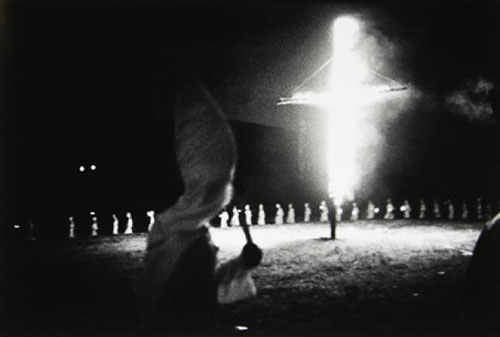_1962.jpg) |
 |
Mounted to mark the 50th anniversary of the Civil Rights Act, Time of Change generates plenty of heat. It comes not only from club-wielding cops and racist antagonists but also from scenes of everyday life: churches, farms, country lanes, tenements and county fairs — places where black life was lived, quietly and outside the view of white Northerners. Combined with pictures of protest, they make for a panoramic view of African-American history, each image detonating explosions that reverberate as you move through the room. The result is a visual odyssey of novelistic scope, at once compassionate and caustic, critical and accepting, and not always what it seems.
 |